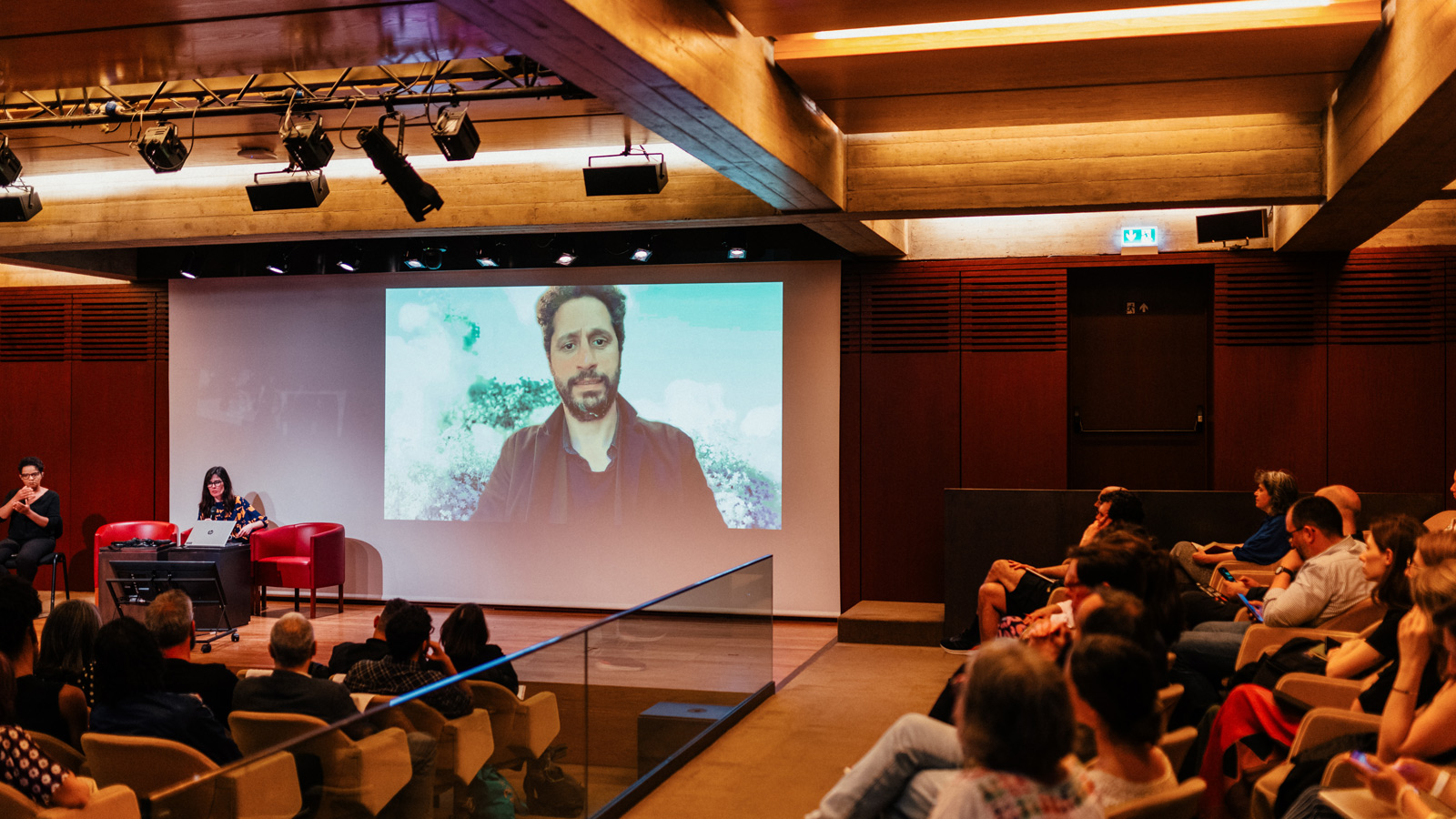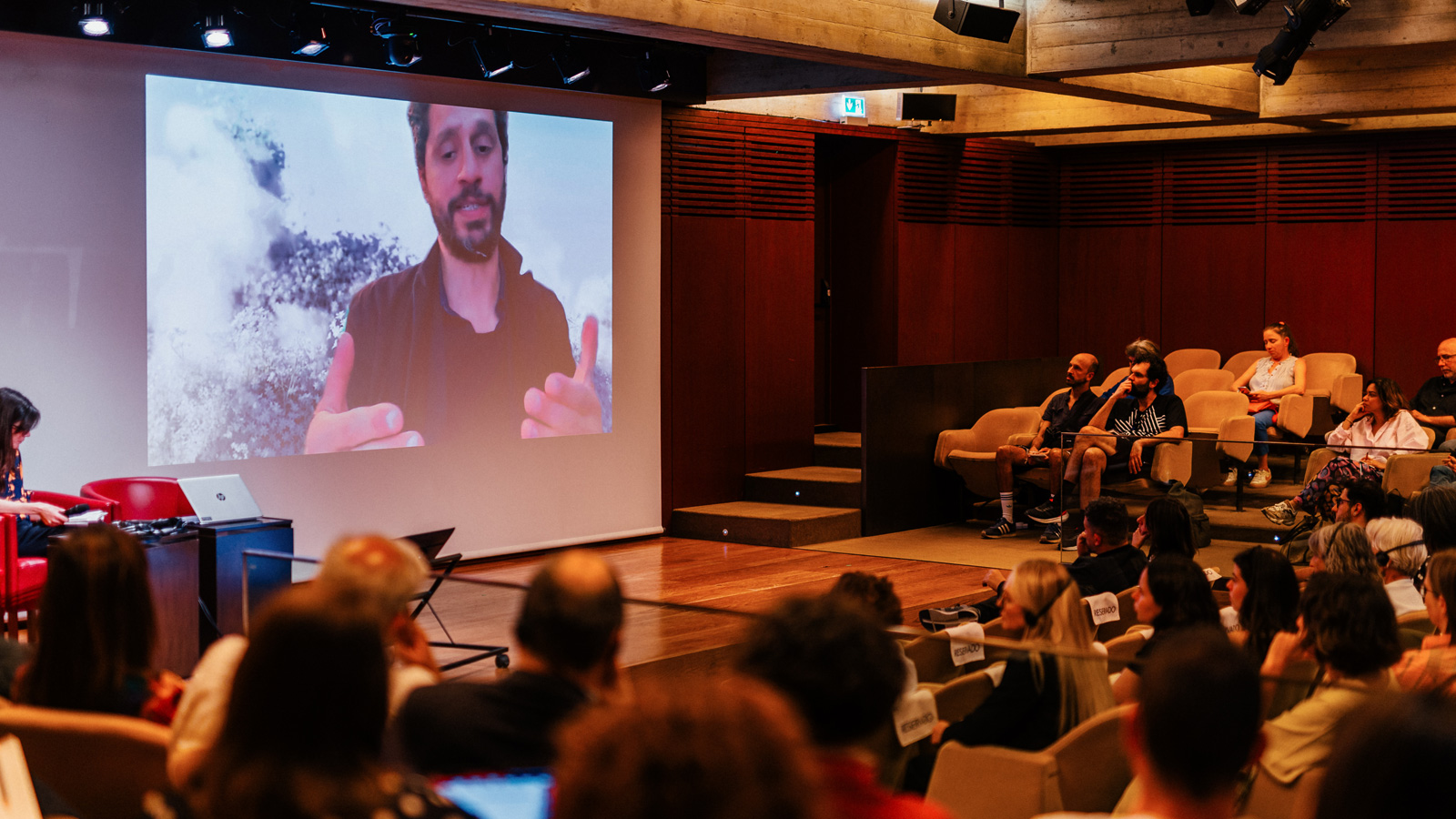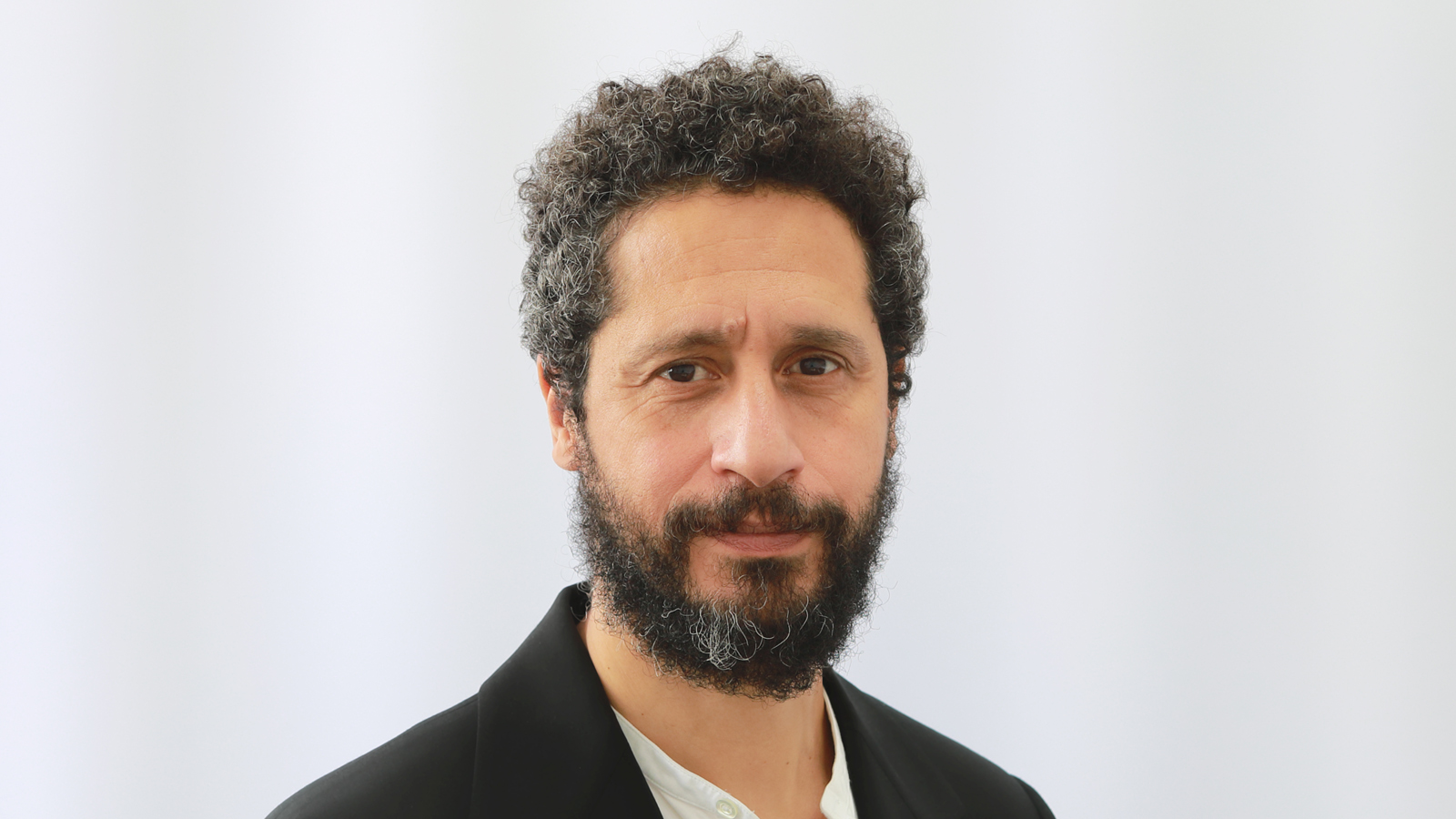Hicham Khalidi: ‘The climate crisis can only be tackled from a multiplicity of thinking’
What are the main responsibilities of artistic and cultural institutions today?
The ‘today’ is very important because this is what I’ve been working on for the past five years, when I started as director of the Jan van Eyck Academie.
I felt a couple of things; one, I questioned whether the context and the conditions of arts practice were included enough within the thinking of our practice, meaning on the one hand, the context – which is everything – surrounding us as an institution or as practitioners, when it comes to the state of the world today. So when it comes to the climate crisis or any other crisis, whether we were fully thoughtful about this, or whether we included it in our thinking.
The other one was the conditions – in which kind of conditions does art practice reside? And how is this different for people? We run a residency and we have many nationalities and many people from around the world that come here and do they come on equal terms to the residency? And how do we negotiate these processes? When it comes to the conditions of art practices, how is in the end an art object foreign? Under which conditions, when you look at travel for instance, or transportation or materials used, all of those conditions that make an object, that make the practice possible, did we not think of that?
So, this was in 2018, very much before the turn when we would see institutions thinking of ecology and the environmental crisis as part of their art and institutional practices. For me, the urgency for more sustainable and just practices was very important, so we put that as central to everything we did and tried to form instruments to work with that.
The second thing is that we questioned what it means to produce today. There is not only a responsibility for the institutions but what does it mean in general to produce and how does this affect our lives or other people’s lives? How are our lives and other people’s lives connected? So, in a sense, an ethical stance around practice in general.
Again, to look back to the context and conditions, this has much to do with the state of the world that we are in, and the pressure that then is formed towards the practices and the institutions and at the same time, trying to find solutions. There was this feeling that we would make ourselves obsolete if we wouldn’t do anything, that we would lose the war, lose our positions and our thinking.
In the beginning, I was much more radical and in a fighting mode, wanting to really work fast and come up with solutions, but, along the way, I found out that it is a very long way and that I need to slow down and take it step by step and do what I can.
We’ve done a lot, also with the last Venice Biennale that I did for the Dutch Pavilion; we establish a lot of great stuff that has to do with my idea, and maybe our idea, of how an institution can be in a world that is changing rapidly and in need of transformation and of other structures.


Talking about the Jan van Eyck academy, what have been the main organizational changes in recent years?
The main change is how we speak to each other, the way we see each other within a structure that formerly was seen as a much more hierarchical structure – I’m the director and they are the team, I direct by saying what they need to do and take full responsibility and they take full responsibility for the things that they need to do – so, a kind of separation of tasks and of responsibilities.
The main thing that we have changed is this sense of a connected responsibility. In the beginning, this was quite hard because people opposed this idea of transformation because they felt it would instrumentalize their way of working and this notion of autonomy within the arts and with that comes many things such as the neutral position of institutions in relation to crisis or to conflict.
But we were able, through ups and downs, to tackle it, to try to find each other because they saw that the challenges that I’ve put forward were very important and when corona hit, they even felt that urgency right away. They thought “now they speak about conditions of care” but before, they wouldn’t be speaking of the word “care”. This changed completely this idea of care of the organizational place, that suddenly became a very important thing because we had to deal with not only the health problems that came with corona, but also the mental health issues that come with being confronted with vast and large problems and issues.
I was always clear about this, that it was just the beginning, that it would cascade into larger things. There’s a beautiful drawing where you see the corona crisis as a wave and these people, who are standing in front of it are saying “it’s over” but behind that wave there’s a much larger wave and it says “climate change”. So, let’s see it in waves, we can only see and act upon what is in front of us. And it takes much more effort to look beyond that, and to look over the wall.
I worked to get everybody on board to start working in areas that we weren’t working in and that we should increase the base of the Jan van Eyck Academie residence, of where people would be coming from, which now amounts to 31 nationalities, mainly from the global south. This idea of restitution and giving back was very present, because the climate crisis can only be tackled from the positions of many different kinds of people, from a multiplicity of thinking.
This multiplicity of thinking can only be achieved when you overcome certain conditions, which could be financial, distance, language, etc. For those things you need to build instruments, things like multiplicity of languages became important to move away from English as an international standard, as the only solution forward, and to understand language also as a process of non-understanding. This means that you can have many cultures next to each other that can understand each other in many different ways, like non verbally and emotionally.
So language would be a big one, and the other one would be to have safe spaces in which one can convene and talk to each other over differences. There can be indifference, but if you can talk, you can position yourself from a certain position. So one of the most difficult things was how do we bring many localities within one locality? To the locality of Maastricht which is predominantly a white community, Dutch, and Limburg, also situated in the south of the Netherlands, very catholic. How do you do that in a way where people are able to speak with each other without feeling attacked or violated? Communal spaces, thinking spaces, working spaces, from the individual to the collective, the practices of coming together, also food as a practice and bringing in families with kids.
I felt that there was a hierarchy being made in the art world through which those conditions of having a family or not would be a factor, whether you would make it or not. If you want to build a new world, you would have to rethink how we can bring in many forms of living where people would be able to add to the equation, because it adds diversity. But it is important, at the same time, not be attacked and feel that they can contribute.
So, language and coming together. And governance? How do we govern ourselves? When you want to alleviate hierarchies, it’s important that your board understands what you do, that you talk with the board. The board was predominantly constructed in a male and not very diverse way, so we worked on that a lot, but it is also important to understand why we would do that. That was really important.
The board now is very much part of our processes, also in the governing and the coming together processes, where we speak with each other about the Jan van Eyck and the things that we want to do. They are always present now, so there’s much more engagement, other than that sole responsibility that they are the board and that they need to be aware of the structures of the academy.
And then very concrete things like, how do we help artists support them in the change, in the transformation of their practices materially? We could not say, for instance, “you can’t just use epoxy because it’s bad for the environment”. We need to support them in order to do differently. To do so we built this ‘Future Materials Bank’, which is now quite big with lots of different kinds of materials that other artists have made that are non toxic and that artists can work with in order to work more ecologically and sustainably.
It is open to everyone. And we have a lab with all the materials so that people can view them here, but also the bank online. The future materials bank is very important to us now, but also for other people and other organizations, we share it a lot with other organizations. The bringing in of other disciplines, or moving beyond disciplines, and being in relation to sectors is very important to us, meaning that we have a couple of farmers that are advisors about the economy and foraging specialists. Many of these things are being seen by residents now, maybe also as ways of survival, to understand ways of conducting oneself in a different way. And they work really well.
There are many challenges as well. There is a lot of precarity within the artistic community. And especially if you look at it from the global south position. One, how do you alleviate such precarity? We can’t alleviate it, but how do you help? But then there is also the difference – let’s say – the colonial difference, that even makes that precarity larger. I mean, if you’re from Bangladesh, your money is worth differently than if you’re from the US. It’s very simple. The exchange rates that we have in the world are so that the dollar prevails. So how do you alleviate that? How do you find ways to accommodate residents in this?
This also kind of proves that the construction that we had before, to not look at these conditions, that it created a kind of art, of aesthetics, of thinking, that now is very different. So the aesthetics and the way we practice are connected to these conditions and changes the way practice looks like. This has all been important in our thinking in the past five years.
How did the ‘Future Material Labs’ get started?
It started in corona times, when Kieren Jones from Central St. Martin Material Futures did a residency at the Jan van Eyck, and within that residency he already wanted to do that. He would gather materials from artists that are more sustainable and ecologically friendlier and non toxic that he would then collect. And in those six months, he made the first steps of the lab that we have now.
Then we started photographing and asking for photographs, and that turned into a big project. So now it’s going to have a 200 square meter space and a very new design at the Jan van Eyck. And we work with many partners, for instance, we work with Brightlands, which is the subsidiary of DSM, which is a big chemical company.
We also have fellowships where people can use the labs, for instance, we had Jesse Adler, who succeeded in taking pigments out of mushrooms, which she did in a lab environment. The nice thing is that you have to do it in an end environment, so if you only do it in a lab, it’s not going to work. If you do it in a lab and you are able to be in a structure such as Jan van Eyck with 38 other people that have many different kinds of disciplines, it works very differently. So if you have an end to end situation where you partner up over sectors, you can achieve much more than if you just do it in a sort of specialized environment.
The ‘Future Materials Lab’ also is not only the lab and the bank, but also has fellowships, long periods of research for people, and it also has the encounters, in which we film most of the presentations that these artists do. And these are available on the website so that you can view how to create and work with certain materials, almost like a do it yourself lab, on the basis of materials.
What common ground did you find between Gulbenkian and the Jan van Eyck Academie when you came here?
We found many links. I felt the wish of Gulbenkian to find new ways of thinking of what a museum can be. A museum that is surrounded by a garden is a very good starting point to rethink the museum as a space for people, of the people, and in relation to nature as well. So in that sense, we have a lot of common ground.
I think it’s brave if a big structure such as Gulbenkian takes the steps, and they already are, to rethink their model or the models that exist, in a different way. But then again, you also have a whole scientific side, and that is huge.
I think the way we are very small and try to think between art and science, for instance, and push the arts a little bit away from markets and public mindedness towards science is also very interesting. So I think we have a lot of common ground there as well.

